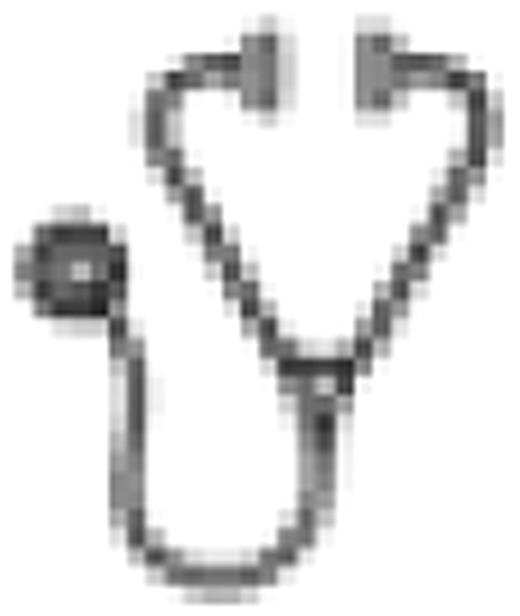Abstract
Abstract 2934
Since MDS is more prevalent in the elderly, use of intensive chemotherapy is considered to be difficult. However, granulocyte colony-stimulating factor (G-CSF) and macrophage colony-stimulating factor (M-CSF), use of clean room and development of promising antifungal agents have resulted in dramatically enhanced safety of post-chemotherapy control of elderly patients. Thus, we attempted to use intensive chemotherapy in HR-MDS and MDS-AML patients.
To evaluate, in HR-MDS and MDS-AML patients, the efficacy and safety of remission induction therapy and post-remission therapy that are standard treatment for de-novo AML in our department.This study enrolled 213 consecutive patients initially treated at our department between 2000 and 2010 who suffered MDS-related disease and whose survival was expected to be less than several months with supportive therapy alone. Almost all of the patients had ≥20% myeloblasts. The age of the patients ranged from 16 to 93 years (median: 70 years). They comprised 2 with good prognosis, 107 with intermediate prognosis and 104 with poor prognosis based on chromosomal findings.
Remission induction therapy consisted of behenoyl-ara-C (BHAC) 350 mg/m2 (300 mg/m2 for patients aged ≥70 years) over 10 days and idarubicin (IDA) 12 mg/m2 (10 mg/m2 for patients aged ≥70 years) over 4 days. Additional etoposide 100 mg/m2 over 4 days was given if bone-marrow examination on Day 15 revealed residual myeloblasts of ≥5%. The efficacy of the therapy was evaluated after the first course. Patients showing maintained remission received 8 courses of post-remission therapy over 11 months. This post-remission therapy included high-dose cytarabine (2 g/m2, or 1g/m2 for patients aged ≥60 years) (HDAC) × 10 and mitoxantrone (MIT) 7mg/m2 × 3 given initially after remission. Maintenance/intensification therapy mainly consisted of BHAC 350 mg/m2 × 4 plus aclarubicin (ACR) 20 mg/body × 6 or IDA 10 mg × 1 alternately every 5 weeks. Outpatient maintenance therapy consisted of M-CSF over 7 days after the end of chemotherapy, followed by administration of G-CSF until neutrophil recovery. Patients were admitted to a clean room if WBC became <1000/mm3. As post-remission therapy, 90 patients received HDAC-MIT, while 50 did not. A total of 28 patients received bone-marrow transplantation during chemotherapy.
CR and PR were achieved in 146/213 (68%) and 43/213 (20%) patients, while 14/213 (7%) showed no response (NR) and 10/213 (5%) died during chemotherapy (CD). CR rate was comparable between patients aged ≥70 years (76/110, 69%) and those aged <70 years (70/103, 68%). Chemotherapy death (CD) occurred in 9/110 (8%) patients aged ≥70 years compared to 1/103 (1%) patients aged <70 years. In terms of prognosis by chromosomal type, CR was achieved in 2/2 (100%), 79/107 (74%) and 65/104 (63%) patients with good, intermediate and poor prognosis, respectively. NR was shown in 3/107 (3%) patients with good prognosis compared to 11/1074 (11%) patients with poor prognosis. The overall survival (OS) in the whole patients ranged 1 to 122 months (median: 11 months), and the event free survival (EFS) in patients achieving CR ranged 1 to 109 months (median: 8 months). Six patients received no treatment after remission because of refusal of post-remission therapy or poor P. S. Among patients receiving post-remission therapy, EFS and OS in 75 patients with intermediate prognosis were 12 and 15 months, respectively, while those in 65 patients with poor prognosis were 6 and 10 months, respectively. EFS in those with and without HDAC-MIT were 8 and 7 months, respectively, showing no difference. OS in 28 patients receiving bone-marrow transplantation ranged 6 to 122 months (median: 17 months). A total of 22 patients (16 with chemotherapy alone and 6 with chemotherapy and bone-marrow transplantation) survived for more than 5 years. There was only one chemotherapy death during post-remission therapy.
The results of this single-center clinical study indicate that major improvement of supportive therapy may allow introduction of remission safely and at a high probability in elderly patients with HR-MDS or MDS-AML. There remains a challenge since the median OS in patients with remission was still as short as around 1 year. One of the future challenges is how to use intensive chemotherapy in combination with distinctive new antileukemics such as lenalidomide.
No relevant conflicts of interest to declare.

This icon denotes an abstract that is clinically relevant.
Author notes
Asterisk with author names denotes non-ASH members.

